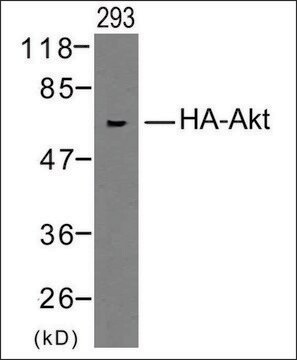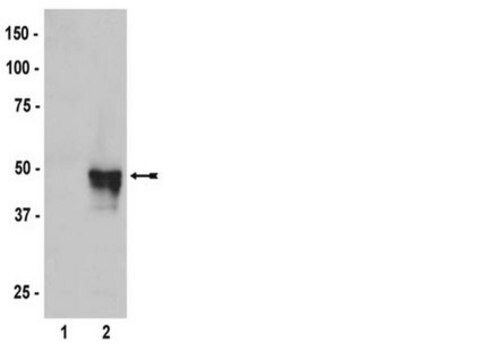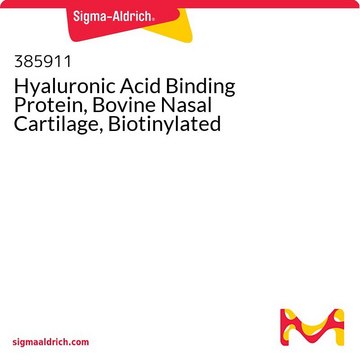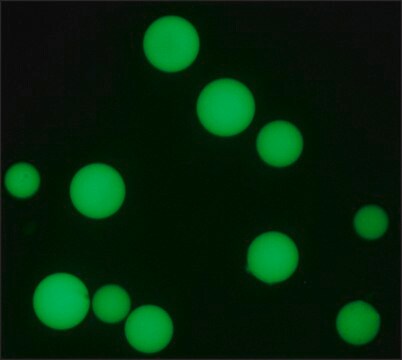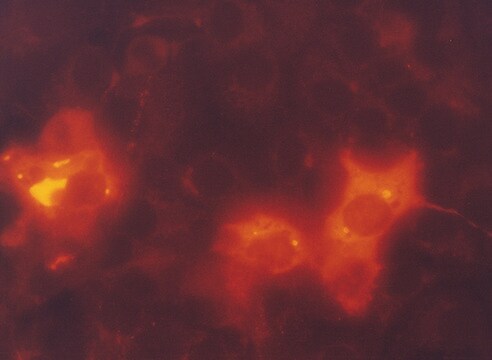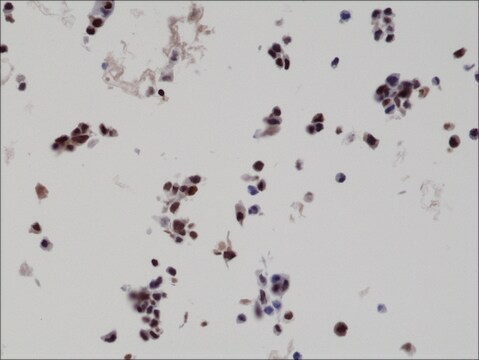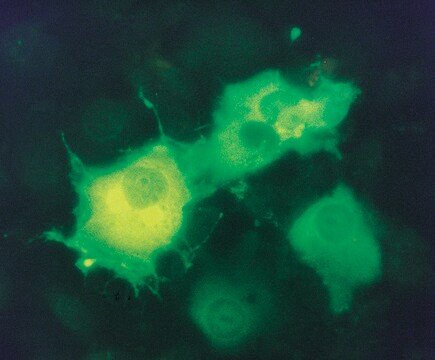H7411
Anti-HA monoclonal
clone HA-7, purified from hybridoma cell culture
Sinônimo(s):
Anti-HA, Anti-hemaglutinina de influenza
About This Item
Produtos recomendados
fonte biológica
mouse
conjugado
FITC conjugate
forma do anticorpo
purified immunoglobulin
tipo de produto de anticorpo
primary antibodies
clone
HA-7, monoclonal
Formulário
buffered aqueous solution
condição de armazenamento
protect from light
concentração
1 mg/mL
técnica(s)
immunocytochemistry: 1-5 μg/mL using HA tagged fusion protein transfected into mammalian cells fixed with paraformaldehyde.
Condições de expedição
wet ice
temperatura de armazenamento
−20°C
Procurando produtos similares? Visita Guia de comparação de produtos
Descrição geral
Especificidade
Imunogênio
Aplicação
- in the labeling of HA-tagged transient receptor potential melastatin 7 (TRPM7) channel protein for immunocytochemistry studies in lymphoblast cell DT40 and human embryonic kidney cells (HEK-293) cells
- in western blotting detection of spindle-associated proteins in Trypanosoma brucei
- in immunostaining of vascular smooth muscle cells (SMCs) for immunocytofluorescence studies
Ações bioquímicas/fisiológicas
forma física
Não está encontrando o produto certo?
Experimente o nosso Ferramenta de seleção de produtos.
Código de classe de armazenamento
10 - Combustible liquids
Classe de risco de água (WGK)
WGK 2
Ponto de fulgor (°F)
Not applicable
Ponto de fulgor (°C)
Not applicable
Escolha uma das versões mais recentes:
Já possui este produto?
Encontre a documentação dos produtos que você adquiriu recentemente na biblioteca de documentos.
Os clientes também visualizaram
Nossa equipe de cientistas tem experiência em todas as áreas de pesquisa, incluindo Life Sciences, ciência de materiais, síntese química, cromatografia, química analítica e muitas outras.
Entre em contato com a assistência técnica


